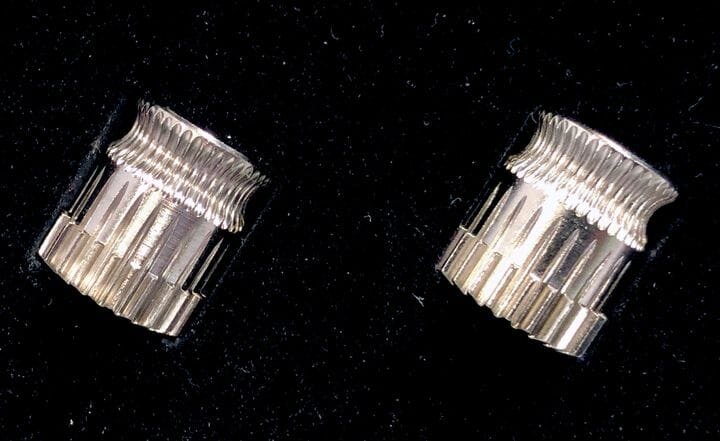![3D printer extruder gears by Runice [Source: Fabbaloo]](https://fabbaloo.com/wp-content/uploads/2020/05/image-asset_img_5eb08e4fcd5ea.jpg)
Recently I ran into representatives from a company I had not previously heard from: Runice.
Runice is a Chinese hardware producer. They describe themselves as follows:
“We are a high-end 3D printer parts manufacture in China, focusing on producing high precision machining and CNC parts, such as nozzles, heatbreaks, heatsinks.”
Largest Chinese Manufacturer of 3D Printer Components
According to their representatives, they are apparently the largest manufacturer of such 3D printer components in China, and have been operating for around six years.
Their goal is to create innovative core components for 3D printer hot ends and sell them to manufacturers on an OEM basis.
![3D printer components by Runice [Soruce: Fabbaloo]](https://fabbaloo.com/wp-content/uploads/2020/05/image-asset_img_5eb08e5022e63.jpg)
For many of their clients, they provide custom-designed products. In this way a client, typically a 3D printer manufacturer, can obtain an original part design that works optimally for their specific machine.
Runice tells us that most of their clients request a strong focus on quality over cost, and they are able to comply.
Runice Size
Apparently their sales revenue is many millions of US$ per year, making them surely one of the largest providers of extruder and hot end components in the world.
![3D printer heatbreaks made by Runice [Soruce: Fabbaloo]](https://fabbaloo.com/wp-content/uploads/2020/05/image-asset_img_5eb08e5062503.jpg)
I asked them how many manufacturers use their products, and Runice simply said, “hundreds”. There’s an interesting implication to this statement.
You’re probably using Runice components in one or more of your 3D printers. Runice says they provide components for some of the “big producers”. One of them is apparently Ultimaker, who has never indicated the sources of their components, as they clearly don’t build all of their machines’ components from scratch themselves.
Runice Components
![3D printer motors and bearings by Runice [Soruce: Fabbaloo]](https://fabbaloo.com/wp-content/uploads/2020/05/image-asset_img_5eb08e50a0c47.jpg)
Component types available from Runice include:
-
Nozzles (brass, stainless, hardened steel, ruby, copper-plated)
-
Hot ends (heater blocks, heatbreaks, heat sinks)
-
Extruder toothed gears
-
Belts (timing and open)
-
Pulleys
-
Bearings
-
Linear rails
-
Motors
Exactly how many products does Runice produce? That’s very hard to say, as they seem to offer literally hundreds of variations of each product type. In my visit to their exhibit at TCT Show alone I saw dozens of different products.
![3D printer hot end components with cutaway to show the interior, made by Runice [Soruce: Fabbaloo]](https://fabbaloo.com/wp-content/uploads/2020/05/image-asset_img_5eb08e50dea38.jpg)
Whatever the number is, it’s likely to increase as they are constantly designing new products for clients as requested.
3D Printer Component Use
![3D printer hot end made by Runice [Soruce: Fabbaloo]](https://fabbaloo.com/wp-content/uploads/2020/05/image-asset_img_5eb08e51225ec.jpg)
The presence of Runice and similar companies reveals the truth about most 3D printers: they are simply assemblies of other components. Of course, some are truly ingenious assemblies, but literally no 3D printer manufacturer builds all of their machines’ components internally.
Components are obtained far more economically through a third party manufacturer that can leverage economies of scale on the problem. As well, companies dedicated to building specific components tend to know a lot more about them than a 3D printer manufacturer might.
The next time you look at your 3D printer, know it is a carefully curated collection of components.
Via Runice (Chinese)

